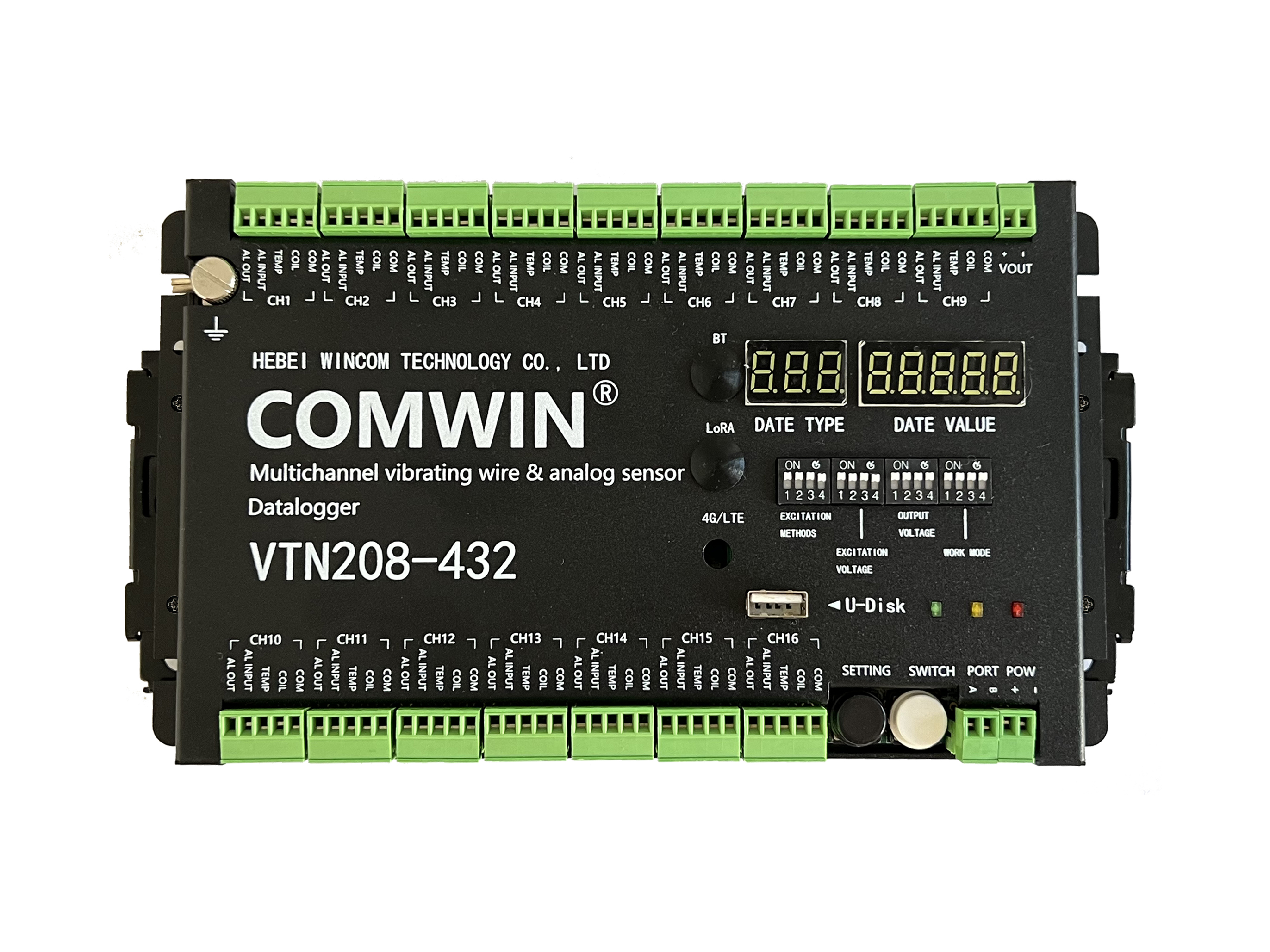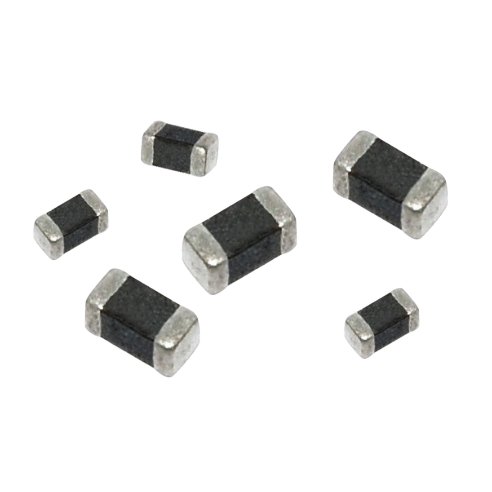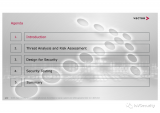By Norman Chanon Hands
Last week, we attended the unveiling of Parrot‘s newest RC quadrotor, the Bebop Drone. Though it was founded as an audio and car accessories company, Parrot has been moving into the consumer RC toy market, starting with the AR.Drone quadrotor that it released three years ago. The Bebop will be the company’s fourth RC quad, after the AR.Drone 2 and the MiniDrone that was announced at CES. The AR.Drone--sold for $300 online and at retail stores like Brookstone--was successful for the company, and Parrot clearly wants to take advantage of rising quadrotor interest with the Bebop, which will be its high-end model. Like the AR.Drone, it‘ll be positioned as a ready-to-fly package for consumers, competing with camera-mounted quadrotor kits like DJI’s Phantom 2 but presumably at a lower cost (pricing wasn‘t announced)。
The Bebop won’t be released until much later this year, but Parrot CEO Henri Seydoux confidently demoed early pre-production prototypes for a crowd of attending press in the courtyard of San Francisco‘s Old Mint museum. We were allowed to fly the prototypes briefly and even demo its FPV feature using an Oculus Rift development kit. Here’s what we took away.
Similarities and Differences with AR.Drone
Parrot is calling the Bebop a drone, but we all know that it‘s technically an RC quadrotor. It has autonomous flight capabilities that the AR.Drone didn’t have, but this is a very different type of quad while won‘t replace the AR.Drone line. Parrot designed the Bebop with weight and safety in mind; the quadrotor is lifted by four brushless outrunner motors, spinning at much lower RPM than what you’d find on something like the Phantom. That‘s because the Bebop weighs much less--380 grams without its foam bumpers--and uses a three-blade design for its propellers. The motors are linked so that if one fails or is blocked, the others immediately stop spinning so the quad doesn’t fly out of control.
Bebop does inherit some design elements from the AR.Drone, though. It‘s stabilized with the use of accelerometers and gyros, and has a vertical camera underneath its body to calculate flight speed and direction (much like an optical sensor on the bottom of a mouse)。 An ultrasound sensor monitors altitude up to eight meters, and the onboard GPS is used for flight tracking, but not flight stabilization (eg. it won’t use GPS to compensate for wind at high altitudes)。 Flight time is estimated to be 12 minutes for the 1200mAh LiPo battery, which takes two hours to recharge. While that‘s lower than the 20+ minutes offered by the new Phantoms, we’ve found that we seldom sustain a single flight for more than 10 minutes without landing anyway. Flying and tracking these quads for extended durations can be mentally exhausting. One thing that‘s nice is that the battery is attached via a standard power connector, so third-party batteries may be usable.
You Fly with a Tablet
Bebop will be sold as two different kits: a standard model and one that comes with a discrete transmitter (we’ll get to that in a moment)。 The standard kit is flown using a mobile app, in this case demonstrated with an iPad. That means that like the AR.Drone, flight controls are handled over a Wi-Fi connection, with the overhead and latency that comes along with it. From our experience, flight with Wi-Fi is responsive enough in close quarters, but we‘re unsure of its reliability and responsiveness over long distances, given the Bebop has a theoretical range of 2KM with its flight controller extender.
The app also lets you plot waypoints using the onboard GPS, a feature not available on the Phantom without the optional Ground Station accessory. Flight data can be tracked and stored on Parrot’s servers, and the company isn‘t imposing any GPS-based flight restrictions for flying close to airports--you’re trusted to abide by safety guidelines and regulations on your own.
Using the iPad, altitude and direction and controlled with an onscreen thumbstick, with lateral movement controlled with the tablet‘s gryoscope by tilting. We’re again not confident that virtual controls can provide the same level of control (and definitely not feedback) as physical flight sticks. On the right side of the tablet are on-screen controls for the Bebop‘s camera.
The Innovative Camera System
This is probably the coolest part of the Bebop. It has a 14MP fisheye camera mounted on the front, which Parrot claims will be able to record stabilized video without the need for a physical gimbal. Instead, the Bebop has an on-board GPU that performs digital stabilization on the video, cropping a 1080p video from the 14MP feed. This also allows you to pan and look around using the Bebop flight app, with up to 180 degrees of view. Videos and photos are stored on the 8GB of onboard flash, and can be transferred off over Wi-Fi or USB.
The live feed from the demo wasn’t clear enough for us to evaluate the video quality, but Parrot says that it‘s comparable to that of a action cameras like the GoPro Hero 3. The digital stabilization looked good, and it’s a technology I could see being used in concert with motorized gimbals for motion stabilization in future camera systems. Panning around in the app looked like interacting with a streetview-style panorama, but with video instead of static images. When you reach the edge of the frame, curved borders and white space showed the limits of the fisheye lens, like unrendered VR space.
Skycontroller Transmitter
An second kit will come with a physical controller, called the Skycontroller. It still pairs with the Bebop over Wi-Fi, but has 4 MIMO antennas (36dBM signal strength) to extend the Bebop‘s range to 2Km (range is 30m without the extender)。 At the center of the Skycontroller is mounting dock for a tablet, and flight sticks on the left and right fly the Bebop like a standard RC quad. Buttons below the sticks automate launch and landing, which is a nice feature. Also useful: the Skycontroller is powered by the same kind of battery as the Bebop, in case users plan on buying extras.
It’s also likely that the Skycontroller will cost more than your standard RC transmitter, given that it has some processing on-board. It‘s basically a tablet, running Android 4.2, with allows it to have USB input and HDMI video out. HDMI out will let users pipe the Bebop’s video to an external monitor (as in the case of our demo) for video production purposes. It‘ll also allow the Bebop to be connected to HUDs like the Oculus Rift for FPV flying.
It’s FPV Ready and Oculus Compatible
This was the big surprise with the Parrot Bebop announcement. Using an Android app running on the Skycontroller, users will be able to connect the Bebop to eyewear like the Oculus Rift or Zeiss Cinemizer glasses. With the Oculus, the Bebop sends a perspective-distorted video feed for the optics to “correct”, even though it won‘t be in stereoscopic 3D. Oculus sends positional data back to the Skycontroller over USB so as you move your head, the software shifts the field of view as to make it look like you’re panning the camera around. In our brief hands-on with the Oculus-connected Bebop, the video feed from the quad wasn‘t immediate, making it difficult to correlate our actions on the Skycontroller with movements on the quad. There wasn’t enough latency to make me feel nauseous, but I definitely felt the last of presence. Video bitrate in the prototype wasn‘t great either, and being unfamiliar with the sensitivity and positioning of the Skycontroller sticks and buttons didn’t help.
Pricing won‘t be announced for the Bebop won’t be made until closer to release, but I would hope that it‘s in the $500-$600 range for what the hardware is offering. If Parrot wants this to be an appealing entry-level RC quad for consumers, it’s going to have to be much more affordable than the Phantom 2s. RC enthusiasts are spending much less than $1000 to build their own quads, so this is really a product for someone who wants to buy a hassle-free kit that‘s ready to fly out of the box. Parrot told us that it hopes that the Bebop will appeal to younger flyers. The AR.Drone was an expensive toy at $300, so I’m hoping that Parrot chooses to use this as an opportunity to open quads to a larger market with aggressive pricing. Otherwise, I can‘t see a lot of parents buying this as an expensive Christmas present.
自動翻譯僅供參考
親身實(shí)踐:Parrot Bebop Drone hands
上周,我們參加了鸚鵡的RC旋翼無人機(jī)揭幕,波普。雖然它成立一個(gè)音頻和汽車配件公司,鸚鵡已經(jīng)進(jìn)入消費(fèi)者的RC玩具市場,開始與AR.Drone飛行器,它三年前發(fā)布。波普將公司第四RC四,AR Drone 2和minidrone宣布CES后。的ar.drone--sold 300美元的在線和零售商店像布魯克斯--成功的公司,和鸚鵡顯然想利用旋翼的興趣上升與波普,將其高端模型。像AR.Drone,它就被定位為一個(gè)準(zhǔn)備飛行包的消費(fèi)者,競爭與攝像機(jī)安裝旋翼工具如DJI的幻影2卻可能在一個(gè)較低的成本(價(jià)格沒有公布)。
波普不會直到今年更晚些時(shí)候公布,但鸚鵡首席執(zhí)行官亨利SEYDOUX自信地演示了早期生產(chǎn)前的原型為一群在三藩的老造幣博物館庭院參加新聞。我們被允許飛行的原型簡單甚至是演示使用Oculus Rift開發(fā)套件的FPV特征。我們拿走了。
異同與ar.drone
鸚鵡叫Bebop無人駕駛,但是我們都知道這在技術(shù)上是一個(gè)RC旋翼。具有自主飛行能力,AR無人機(jī)沒有,但這是一個(gè)非常不同類型的四而不會取代AR.Drone線。鸚鵡設(shè)計(jì)考慮重量和安全的波普;旋翼由四無刷電機(jī)旋轉(zhuǎn)石抬起,在較低的轉(zhuǎn)速比你像幽靈的發(fā)現(xiàn)。這是因?yàn)椴ㄆ盏闹亓可?80克,沒有泡沫保險(xiǎn)杠,采用一三葉片設(shè)計(jì)的螺旋槳。電機(jī)連接,如果出現(xiàn)故障或堵塞,則立即停止旋轉(zhuǎn)的四不失控。
波普從AR.Drone繼承的一些設(shè)計(jì)元素,但。它是用加速度計(jì)和陀螺儀的使用穩(wěn)定,并具有垂直的攝像機(jī)在體計(jì)算飛行的速度和方向(就像在鼠標(biāo)底部的光學(xué)傳感器)。一種超聲波傳感器監(jiān)測到八米的高度,而星載的全球定位系統(tǒng)是用于飛行跟蹤,但不穩(wěn)定飛行(如不使用全球定位系統(tǒng)來補(bǔ)償高空飛行)。飛行時(shí)間估計(jì)為1200mAh鋰電池12分鐘,要花上兩個(gè)小時(shí)充電。雖然低于20 +分鐘提供的新幻影,我們已經(jīng)發(fā)現(xiàn),我們很少能維持一個(gè)單一的飛行超過10分鐘,而不著陸。飛行和延長持續(xù)時(shí)間跟蹤這些四邊形可以傷神。有一件事是好的是,電池的連接通過一個(gè)標(biāo)準(zhǔn)的電源連接器,所以可以使用第三方電池。
你飛一片
波普將出售兩種不同的工具:一個(gè)標(biāo)準(zhǔn)模型和一個(gè)帶有離散變送器(我們會在一個(gè)時(shí)刻)。標(biāo)準(zhǔn)的試劑盒是飛行使用一個(gè)移動應(yīng)用程序,在這種情況下,展示了一個(gè)iPad。這意味著像AR.Drone,飛行控制是通過Wi-Fi連接的開銷和延遲,隨之而來的是。從我們的經(jīng)驗(yàn),與Wi-Fi航班在近距離的響應(yīng)不夠,但我們在長距離的可靠性和響應(yīng)性的確定,給出了比波普有理論范圍2km的飛行控制器的擴(kuò)展。
應(yīng)用程序也可以讓你的陰謀利用星載GPS航點(diǎn),特征不可在幽靈沒有可選的地面站附件。飛行數(shù)據(jù)可以保存在鸚鵡的服務(wù)器,和公司沒有實(shí)施的基礎(chǔ)飛行限制任何GPS飛行接近機(jī)場,你信任遵守安全準(zhǔn)則和規(guī)定自己。
使用iPad,與屏幕上的搖桿控制高度和方向側(cè)向運(yùn)動控制,用平板的陀螺傾斜。我們再次不相信,虛擬控制可以提供相同級別的控制(絕對不反饋)作為物理飛行棒。在平板右側(cè)屏幕上的控制對于波普的相機(jī)。
創(chuàng)新相機(jī)系統(tǒng)
這可能是最酷的一部分,波普。它具有安裝在前部的14MP魚眼相機(jī),這只鸚鵡能提供穩(wěn)定的視頻記錄不需要物理框架。相反,波普具有一個(gè)板上的GPU執(zhí)行的數(shù)字視頻穩(wěn)定,種植一個(gè)1080p視頻從14MP飼料。這也允許你泛看使用波普的飛行程序,高達(dá)180度的視角。視頻和照片存儲在板載閃存8GB,可以通過Wi-Fi或USB轉(zhuǎn)了。
的直播演示不夠清晰來評價(jià)視頻質(zhì)量,但鸚鵡說它是與一個(gè)行動相機(jī)一樣的GoPro Hero 3。數(shù)字穩(wěn)定是很好的,這是一個(gè)技術(shù)我可以看到正在使用的電動萬向在未來的相機(jī)系統(tǒng)的運(yùn)動穩(wěn)定性的音樂會。平移在App看起來像一個(gè)街景風(fēng)格全景互動,但不是靜態(tài)圖像視頻。當(dāng)你到達(dá)邊緣的框架,弧形邊框和白色空間顯示的魚眼鏡頭的范圍,如未抹灰的VR空間。
skycontroller發(fā)射機(jī)
第二試劑盒將與物理控制器,稱為skycontroller。它還具有Wi-Fi波普對,但有4天線(36dbm信號強(qiáng)度)延長波普范圍2km(范圍30m無擴(kuò)展)。在skycontroller中心是一片安裝碼頭,和飛行貼在左、右飛博像一個(gè)標(biāo)準(zhǔn)的RC四。按鈕下面的樹枝自動啟動和著陸,這是一個(gè)很好的功能。也有用的skycontroller由電池一樣波普供電,如果用戶打算買東西。
也可能是skycontroller將花費(fèi)超過你的標(biāo)準(zhǔn)RC發(fā)射器,因?yàn)樗哂幸欢ǖ奶幚砩稀K旧鲜且粋€(gè)平板電腦,運(yùn)行的是Android 4.2,以允許它有USB輸入的HDMI視頻輸出。HDMI輸出可以讓用戶的視頻到外部監(jiān)控管波普的(在我們的演示視頻生產(chǎn)目的的情況下)。它也會讓波普被連接到HUD喜歡FPV飛行Oculus Rift。
是FPV準(zhǔn)備Oculus兼容
這是個(gè)很大的驚喜與鸚鵡比波普的公告。通過對skycontroller運(yùn)行Android應(yīng)用程序,用戶將能夠連接波普眼鏡像Oculus Rift或蔡司出的眼鏡。與Oculus,波普派透視失真視頻飼料的光學(xué)“正確”的,即使它不會在3D立體。Oculus發(fā)送位置數(shù)據(jù)回skycontroller USB所以你移動你的頭,軟件轉(zhuǎn)移視野使它看起來像你平移相機(jī)。在我們短暫的動手與Oculus連接波普,從四視頻飼料不及時(shí),使得它很難與我們的行動與四運(yùn)動skycontroller。沒有足夠的時(shí)間讓我感到惡心,但我覺得在場上。在樣機(jī)的視頻比特率不是很大,和不熟悉的skycontroller靈敏度和搖桿和按鍵定位沒有幫助。
定價(jià)不會被宣布為波普不會接近釋放了,但我希望它在500美元600美元范圍內(nèi)所提供的硬件。如果只希望這是一個(gè)有吸引力的入門級RC四對于消費(fèi)者來說,這將是比幻影2S更加低廉。RC愛好者花費(fèi)少于1000美元來建造他們自己的失誤,所以這是一個(gè)真正的人想買一個(gè)無憂的工具包,準(zhǔn)備飛出箱產(chǎn)品。鸚鵡告訴我們,希望博會吸引年輕的傳單。AR無人機(jī)在300美元的昂貴的玩具,所以我希望那只鸚鵡選擇以此為契機(jī),打開四周更大的市場與積極的定價(jià)。否則,我不能看到很多父母買這個(gè)圣誕禮物。
-
WIFI
+關(guān)注
關(guān)注
81文章
5306瀏覽量
204389 -
無人機(jī)
+關(guān)注
關(guān)注
230文章
10510瀏覽量
181688
發(fā)布評論請先 登錄
相關(guān)推薦
MES系統(tǒng)的最佳實(shí)踐案例
云計(jì)算平臺的最佳實(shí)踐
TFT適配LVGL實(shí)踐分享

RTOS開發(fā)最佳實(shí)踐
振弦采集儀的工程安全監(jiān)測實(shí)踐與案例分析

【大語言模型:原理與工程實(shí)踐】探索《大語言模型原理與工程實(shí)踐》2.0
【大語言模型:原理與工程實(shí)踐】探索《大語言模型原理與工程實(shí)踐》
靜電ESD整改實(shí)踐:從基礎(chǔ)到高級的應(yīng)對策略?





 親身實(shí)踐:Parrot Bebop Drone
親身實(shí)踐:Parrot Bebop Drone











評論